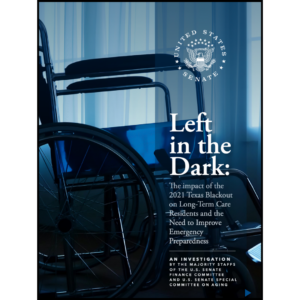Does your building have an unsafe ‘open door’ policy?
Periodically I receive newsletters from a number of LTC organizations I have covered. Recently, I received the Montgomery Messenger, a publication produced by the residents of Montgomery Place in Chicago. The column “Message from Michael” by Executive Director Michael Apa addressed building security and the replacement of locks on internal doors, including resident units.
According to Apa’s column he says that because “keys were repeatedly lost over the course of time and duplicates were overproduced” he asked the Maintenance Committee of the Residents’ Council to participate in developing specifications and vendor interviews to meet their requirements for retrofitting the facility’s locks.
After establishing their requirements, and submitting a request for proposal to a number of security vendors, they selected one that fulfilled their needs. The committee rejected credit-card style keys because they are difficult for older residents and those with arthritic hands. Instead, they were retrofitted with conventional keys for staff and residents that could be coded with specific access capabilities and record the time of use.
This column piqued my curiosity because I never really considered how many keys might exist for one door, especially in older facilities. I certainly had an extra key to my mom’s unit when she was in assisted living—and she lived at two different ones over time, which is another story. I know I also had access to the front door. When she moved from the first and then when she passed away, I know I returned her keys, but I’m not sure if I returned the duplicates.
I’m sure my experience is not an isolated event. It’s a bit staggering to think about how many residents, employees and families have had access over the years. Do you have a foolproof key collection procedure? Are periodic lock changes—from drug cabinets to offices to resident rooms—part of your regular maintenance program? It’s something to think about.

Sandra Hoban was on I Advance Senior Care / Long-Term Living’s editorial staff for 17 years. She is one of the country’s longest-serving senior care journalists. Before joining Long-Term Living, she was a member of the promotions department at Advanstar Communications. In addition to her editorial experience, Sandi has served past roles in print and broadcast advertising as a traffic and talent coordinator.
Related Articles
Topics: Operations











